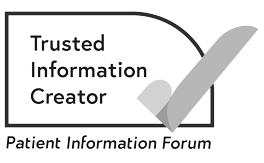Chemotherapy cream or immunotherapy cream to treat skin cancer
Chemotherapy cream (also called topical chemotherapy) or immunotherapy cream can be applied directly to the skin to treat some skin cancers.
On this page
-
About chemotherapy cream and immunotherapy cream
-
What is chemotherapy cream for skin cancer?
-
How to apply chemotherapy cream for skin cancer
-
Side effects of chemotherapy cream
-
What is immunotherapy cream for skin cancer?
-
How to apply immunotherapy cream for skin cancer
-
Side effects of immunotherapy cream
-
Getting support
-
How we can help
About chemotherapy cream and immunotherapy cream
You may be prescribed a cream that you put on (apply) to the area to treat non-melanoma skin cancer. There are 2 types:
- chemotherapy cream
- immunotherapy cream.
Your doctor, nurse or a pharmacist will give you the cream to apply at home. They will explain:
- how to apply it
- how long to use it for
- when to stop using it.
What is chemotherapy cream for skin cancer?
Chemotherapy uses anti-cancer drugs to destroy cancer cells. When it comes in a cream or lotion that you put directly onto a skin cancer this is called topical chemotherapy. It only affects the area of skin you use it on. This means it does not cause the same side effects as chemotherapy tablets or other types of chemotherapy.
A cream called Efudix® is used to treat Bowen’s disease and a type of basal cell carcinoma (BCC) called superficial BCC. Efudix® contains a drug called fluorouracil or 5FU.
How to apply chemotherapy cream for skin cancer
You apply the cream once or twice a day. The area can usually be left uncovered. But your doctor or nurse may advise you to cover the area with a waterproof dressing after putting on the cream. Follow the instructions they give you.
Treatment is usually for 2 to 6 weeks, depending on the area of the body.
Side effects of chemotherapy cream
This treatment should make the skin inflamed. If you have white skin, the area may become red. It may become sore and leak fluid. If the skin reaction is particularly severe, the treatment may be paused or sometimes stopped.
Your doctor may prescribe a steroid cream to help with the inflammation. The skin usually takes about 2 weeks to fully heal after you finish the treatment. But it can take longer.
Try to protect the treated area from the sun. This can make the inflammation worse. Usually, there are no other side effects with this type of chemotherapy.
What is immunotherapy cream for skin cancer?
Immunotherapy drugs use the body’s immune system to attack cancer cells.
An immunotherapy cream called imiquimod (Aldara®) is used to treat Bowen’s disease and some small superficial basal cell carcinomas (BCCs). It is usually used if surgery is not suitable or if the skin cancer is in more than 1 area.
How to apply immunotherapy cream for skin cancer
You usually apply the cream once a day, 5 days a week. Treatment is usually for 6 weeks
Your doctor, nurse or pharmacist can give you more detailed instructions on how to use the cream. They can also help manage any side effects.
Side effects of immunotherapy cream
You may feel a burning or tender feeling in the area being treated. This is most common at the start of treatment. Some redness or crusting of the skin usually occurs during the treatment. But there should be no permanent scarring. If the skin reaction is very strong, your doctor may give you a steroid cream to help.
It is normal for redness and some crusting to continue for about 2 weeks after the treatment has finished.
Usually, you only notice side effects where you apply the cream. But some people may feel unwell with shivers or flu-like symptoms. If this happens, contact your doctor or specialist nurse for advice.
Getting support
Macmillan is here to support you. If you would like to talk, you can:
- Call the Macmillan Support Line for free on 0808 808 0000.
- Chat to our specialists online
- Visit our Online Community skin cancer forum to talk to people who have been affected by skin cancer, share your experience, and ask an expert your questions.
Date reviewed

Our cancer information meets the PIF TICK quality mark.
This means it is easy to use, up-to-date and based on the latest evidence. Learn more about how we produce our information.
How we can help



